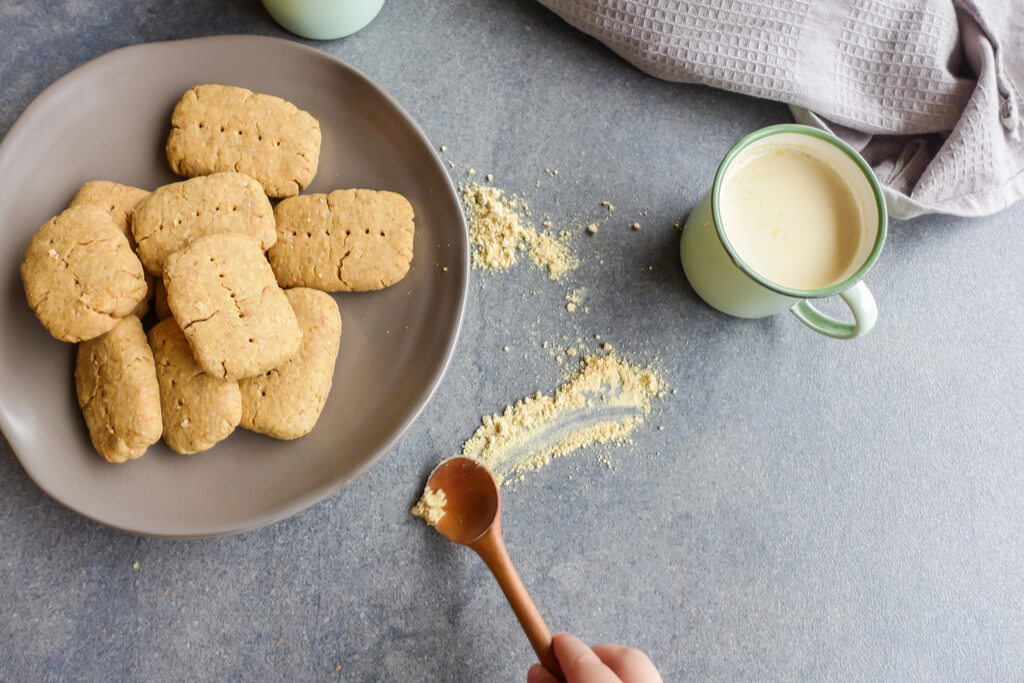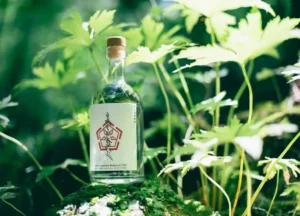If you have ever wondered about that yellow powder that covers some of your favorite Japanese snacks, chances are you have just wandered into kinako territory. Let’s learn all about it and its health benefits.
Table of Contents
ToggleWhat is Kinako?
Kinako is a yellow flour made by grinding roasted soybeans. It is a low-carb alternative to all-purpose flour used in several baked goods. Heating soybeans reduces toxic substances, removes the unique odor of soybeans, and adds fragrance, making it easier to eat.
However, its taste is different from the savory taste of soybeans. The taste of soybean powder is similar to roasted peanuts and mildly sweet. Soybean powder comes from crushing soybeans with the skin on, which makes it very nutritious, while others come from peeled soybeans that are soft and pleasant. It is famous in Japan, Korea, China, and Indonesia.

History of Kinako
Kinako is present in Japanese cuisines, though in small quantities. The first documented version of the soybean powder (previously called Mame No Ko) was around the 1540s when it first appeared in Nyōbō Shitsukegaki (the Women’s Book of Manners). As per the Nihon Kokugo Daijiten (Shogakukan Japanese Dictionary), it was present in Japan before sugar arrived in the 16th Century.
Therefore, it has always been a natural sweetener in Japanese dishes. Due to it being less sweet than refined sugar, it also provides additional health benefits over foods with high sugar content. Many sweets lovers still use it today in their favorite desserts. To learn how to use kinako, check out this article.
How is it made?
The process of creating this sugar alternative is not very complicated. It just requires roasting and then grinding the soybeans to a fine powder. In most cases, the skin of the soybean is removed before pulverizing the beans, but some varieties retain the roasted skin. Yellow soybeans produce yellow powder, and green soybeans produce light green.
Curious about kinako and other authentic Japanese snacks? Sakuraco ships local Japanese snacks all over the world right to your doorstep.
Different Types Of Kinako
Although the regular yellow kind is most popular among people, there are two other types.
Black Soybean Kinako
The variety made from black soybeans is yellowish-black and has fine black spots within the powder. It also comes with the pleasant fragrance of black soybean. It has more health benefits than the yellow version but is also more costly.
Green Soybean Kinako
This version, made from green soybeans, is greenish-yellow in color. The green soybean version is mainly used to make Uguisu Mochi.

How is it used?
Amongst the various dishes which use Kinako and are prevalent in Japan, the following are a few:
Warabimochi: To make this dish, dip or coat starch mochi in kinako and brown sugar syrup.
Kinako Mochi: This mochi is a rice cake. You coat soft rice cakes with sugar and titular yellow powder to make them.
Dango: Mitarashi dango, a type of dango, tastes excellent when skewered on a stick and coated in soybean powder.
Kinako Wagashi: To create a smooth anko (red bean paste), boil sweet red beans (azuki beans), beat them to a paste, and then sweeten them with sugar. Finally, cover them with yellow powder for added sweetness.
Kinako on Japanese Shaved Ice: If you want an easy-to-make sweet dish, ice can be shaved and topped with sweet soybean powder.

Kinako Candies: Of course, soybean powder’s nutty, sweet flavor does find its way into the confectionaries for kids.
Kinako Ice Cream: The nutty taste of kinako gels well with vanilla ice cream and provides a unique twist when used as a topping. But you can also use it directly as a flavor to create kinako-flavored ice cream.
Kinako Flour Bread: You can dust freshly-baked bread with this sugar alternative. The sweetened coating makes bread excellent for kids and health-conscious people who avoid sugar but still want to taste something sweet.
Kinako Yokan: The Mizu Yokan, one of Japan’s delicacies, tastes extremely good when coated with this soybean flour.
Health Benefits Of Kinako
The advantages of soybeans are all available in our favorite Japanese sweet powder, like essential amino acids, higher fiber, omega acids, and reasonable amounts of vitamins and minerals, including iron and potassium. Other health benefits include:
Improved skin health: Kinako contains high isoflavones. Isoflavones help reduce acne and improve the metabolism of the skin. Thus keeping the skin healthy.
Helps reduce fat: Our favorite soybean powder helps by absorbing fat. It helps the body break down fat more efficiently and faster.
Reduces swelling: It also has components that are good for a diuretic effect which helps in water retention. Thus helping the body reduce swelling or inflammation of any kind.
Helps reduce constipation: Soybean flour has a high content of dietary fiber which helps in improving intestinal health. Thus, helping reduce constipation in patients.
Improves hair texture: This sugar alternative has several vitamin contents which help improve hair health, making the hair smoother and more beautiful.










